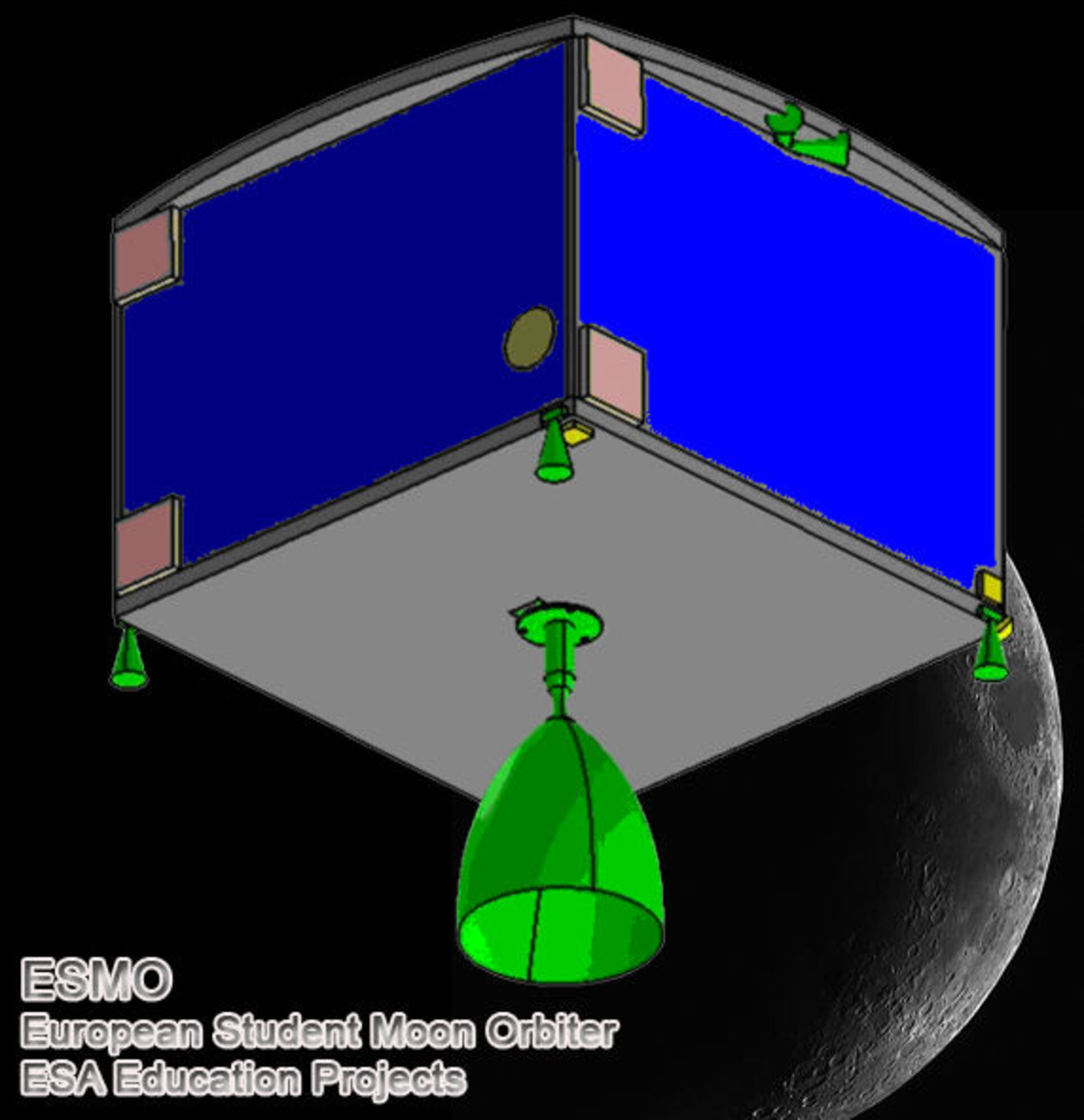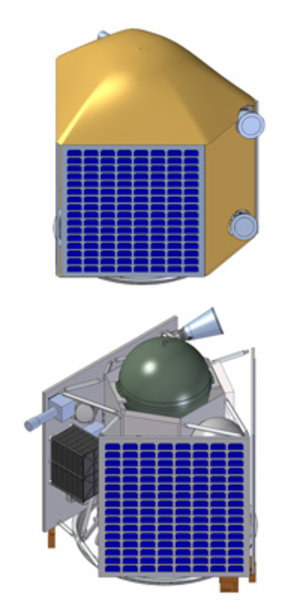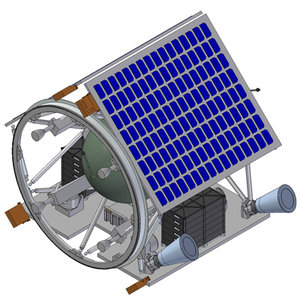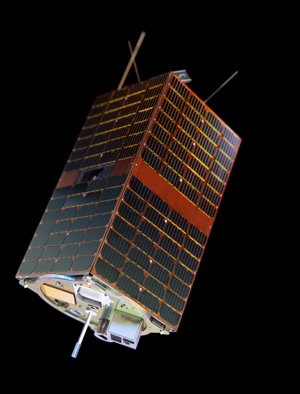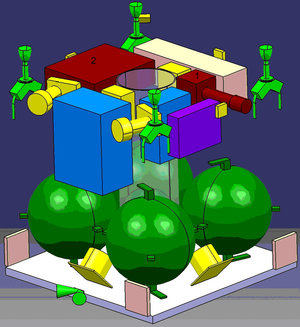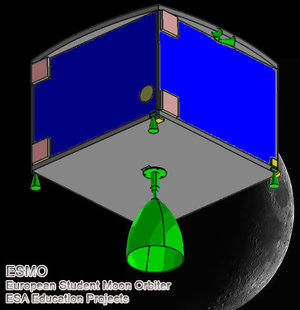ESMO call for proposals for new student teams
The ESA Education Office is currently looking for student teams to fill the following vacancies in phase B1 (preliminary design) of the European Student Moon Orbiter (ESMO) project, which is expected to last until February 2009.
The call is open to students who are from universities in ESA Member or Cooperating States. Furthermore, the university shall have the necessary experience in the related field, and an experienced professor shall be able to supervise and give support to the team.
Attitude Determination and Control System (ADCS)
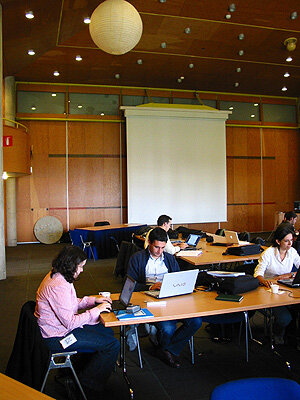
It is anticipated that the ADCS team will be comprised of at least 5 individual students with responsibility for the subsystem level aspects of the attitude determination and control for the ESMO spacecraft. In addition, the team will be responsible for certain units within the subsystem such as sun sensors and Inertial Measurement Units.
Based on the design developed in the Phase A study, the team will perform the following tasks:
- Definition of subsystem requirements, and unit requirements and interfaces for the sun sensors/IMUs
- Definition of, in conjunction with the reaction wheel, attitude control thruster and star tracker teams, the preliminary design of the attitude determination and control subsystem
- Assess whether to develop or procure the sun sensors/IMUs through university partnerships
- Performing necessary analysis to support and justify the preliminary design of the subsystem
- Developing the models of attitude control laws for the ESMO spacecraft
- Developing MatLab/Simulink codes of the models to be integrated into the ESMO mission simulator
- Completion of all required documentation for the ADCS contribution to the ESMO mission simulator
- Participation in weekly on-line meetings and posting bi-weekly progress reports
- Participation in regular project workshops at ESA/ESTEC
If selected for the later phases of the project, the team would perform the following tasks.
- Development of the ADCS on-board software incorporating the defined and simulated attitude control laws in order to process inputs from sensors and control outputs to actuators in real-time to maintain the commanded attitude profile provided by the flight dynamics team during the operations.
- Development, or procurement, and testing of the sun sensor/IMU breadboard and engineering models, including participation in an avionics test bench activity at ESA/ESTEC.
- Manufacture (or procurement) and testing of sun sensor/IMU flight models and delivery to ESA/ESTEC for spacecraft integration and verification.
- Delivering the final ADCS on-board software for loading into the spacecraft OBC, in conjunction with the on-board data handling subsystem team.
Assembly, Integration and Verification (AIV) and Operations teams (OPS)
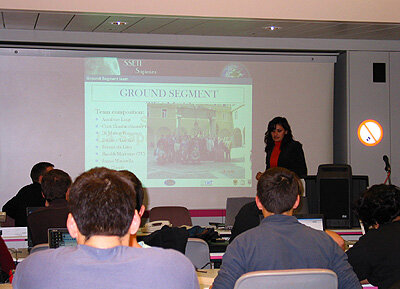
It is anticipated that the AIV team will eventually transition into the OPS team to maximize the benefit of the chosen team and their gathered knowledge with respect to the spacecraft flight model performance.
The team should be comprised of at least 5 students and has the responsibility for the following during phase B1.
- Define the spacecraft Assembly, Integration and Verification (AIV) plan.
- Define the Ground Support Equipment (GSE) requirements and specifications for spacecraft assembly, integration and verification.
- Define the verification requirements and test plans for spacecraft test models and flight model.
If selected for the later phases of the project, the team would perform the following tasks.
- Define the spacecraft user manual and flight operations plan.
- Design, manufacture and test the GSE (mechanical and electrical) prior to the AIV campaigns.
- Actually perform the AIV of the spacecraft test and flight models under expert supervision, at ESA/ESTEC or other facility, including the operation of the GSE.
- Participate in the launch campaign, if required, under close expert supervision, including functional/interface testing of the spacecraft flight model.
- Based on knowledge of spacecraft assembly and testing, transition into a spacecraft operations role in the mission control centre, and actually operate the spacecraft during the mission according to the flight operations plan.
Space Environment & Effects Analysis (SPEN)
It is anticipated that the SPEN team will be comprised of at least 5 individual students with responsibility for space environment & effects analysis relating to the ESMO mission profile.
The SPEN team shall perform the following tasks.
- Perform analyses of the space environment that would be encountered by the ESMO spacecraft throughout its mission, using mission analysis data on orbits and trajectories provided by the mission analysis team.
- Perform analyses and simulations on the effects of the encountered space environment on the ESMO spacecraft and its subsystems and payload.
- Propose effective measures to mitigate these effects through design, should they present a significant risk to the success of the mission.
- Document their analyses as required by the project.
Space environments shall include the natural environments (radiation, micro-meteoroids, atomic oxygen, vacuum) and the induced environments (man-made debris, electromagnetic interference, contamination).
The team shall use standard environment models, and suitable simulation and analysis software tools (e.g. ESABASE, FASTRAD, GEANT4) to perform the necessary environment and effects predictions, particularly radiation shielding analyses taking into account the specific spacecraft configuration provided by the Structures team.
Proposal submission
Each team shall submit their proposal to esmo@esa.int using the provided template.
The deadline for submission is September 12 at 23:59 CET.


